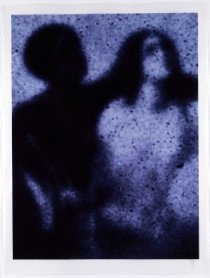Susan Hiller
dal 30/6/2007 al 22/9/2007
Segnalato da
30/6/2007
Susan Hiller
Moderna Museet, Stockholm
The Curiosities of Sigmund Freud and Other Works

The Curiosities of Sigmund Freud and Other Works
Curator: Fredrik Liew
Many artists produce good work, even very good work, but few artists have, for more than thirty years and with such accuracy of aim, time and time again, hit the exact spot of what we could call the central nervous system of art as Susan Hiller. What almost all of her works have in common is the way she takes conceptual command of the space in between what we see and how we interpret it, while at the same time exploiting the poetic potential offered by this particular space.
Hiller always starts off with something ordinary in her surroundings, be it objects as in Dedicated to the Unknown Artists (1972-1976), where she collected post cards of rough seas, or testimonies as in Belshazzar's Feast (1983-1984) where she made use of newspaper articles about people who had seen mysterious messages on their television sets after the regular broadcasts. These and other, often similarly repressed, marginalised, censored or ignored things and stories are Hiller’s raw material which she processes and returns to us in new shapes and with new values.
Take, for example, the above-mentioned Belshazzar's Feast. The installation exists in a couple of versions but basically it comprises a room with a television set. The screen shows a video of a fire, in front of which visitors can sit down. I am sure that everyone, without having seen the work, can remember the childlike excitement of staring into the fire. Our brains work overtime to translate the abstract, monotonous and amorphous shapes into a meaningful image. In an effortless and congenial way, based in the aforementioned newspaper articles, Hiller comments on the universal power of imagination - the ability to see beyond the common ground of factuality – and at the same time she opens the floodgates of our imagination.
In light of this, it is not surprising that Hiller in several of her works has displayed an interest in a visionary such as Sigmund Freud. In addition, it seems quite natural that Freud was in possession of the eight slides on which Hiller based her work The Curiosities of Sigmund Freud (2005). The master copies of the images we see here are so small that they appear as tiny blobs within the frame of the slide, but a properly focused microscope brings out the mysterious motifs that Hiller has magnified for her prints. This “process of magnification”, the journey into the image, was a popular family entertainment in the late 19th and early 20th centuries, the aim of which was to surprise and delight viewers with the transformation of the blobs into something which carried the potential of meaning. However, the ninth image of the series is not derived from the slides but comes from a letter written by Sigmund Freud to his fiancée. He circled two inkblots in the letter and made a comment, “Here the pen fell out of my hand and inscribed these secret signs. I beg your forgiveness and ask that you do not trouble yourself with an interpretation”. By juxtaposing this fragment with the slide images, Hiller almost provides a manual for viewing the work as a whole. Hiller has said, “Exploring the mystery of decipherment when looking at these 'curiosities', and allowing the blurry, blobby shapes to hover just on the brink of seeming to form something, is to participate in the same playful and ironic spirit.”
In brief, by undermining all possible fixed meanings and truths, Hiller incorporates our viewing into her works, nourishing a positive instability in our perception. The works, however, are always multi-layered. For example, I see The Curiosities of Sigmund Freud also as a play on the perspective of the subjective and the objective. Who has the right to consolidate a statement of someone or something? Who has the preferential right of interpretation and why? Bringing these images to life makes them almost into ghosts, and suddenly, using Freud’s possessions and history, we are analysing the great psychoanalyst.
The new sound installation, Nordic Witnesses, brings other perspectives to bear on the same creative, interpretative act of viewing that is characteristic of The Curiosities of Sigmund Freud. With the aid of headphones we can listen to thirteen voices in Swedish, Norwegian, Danish and Finish relating encounters with UFOs, strange creatures and light phenomena. These are witnesses, from our secularised contemporary society, of sightings that could be placed on a level with the Biblical visions of earlier times.
<
The parallel to religious visions, as well as other forms of faith and paranormal sightings, is interesting in more ways than one. Not least the fact that it opens up for reflection on how this way of looking at, or imagining things beyond “facts” always has been met with great scepticism. And at the same time, and maybe because of it, one can observe that the ability to see more than what in actual fact exists is a driving force in the world: politically, socially and technologically. This most peculiar capacity is all-important in the generation of new knowledge and new orders. We cannot strive towards something that we cannot imagine.
Opening 1 July at 6-8 pm. At 6.15 pm a conversation between the artist and Fredrik Liew, Moderna Museet.
Moderna Museet
Island of Skeppsholmen - Stockholm
Moderna Museet is open:
Tuesday 10-20
Wednesday - Sunday 10-18
Mondays closed



